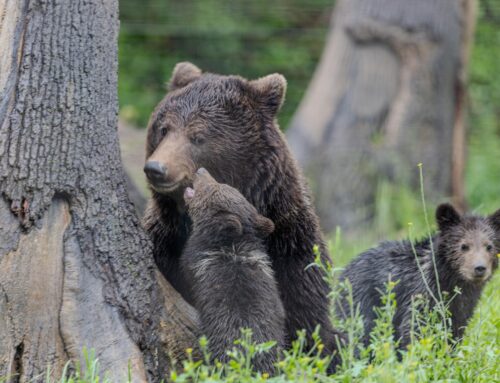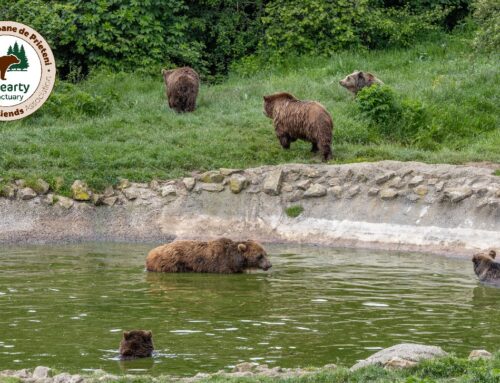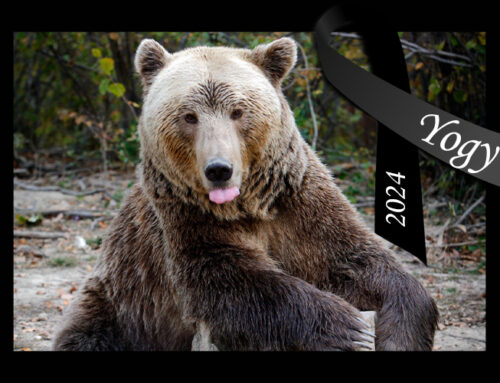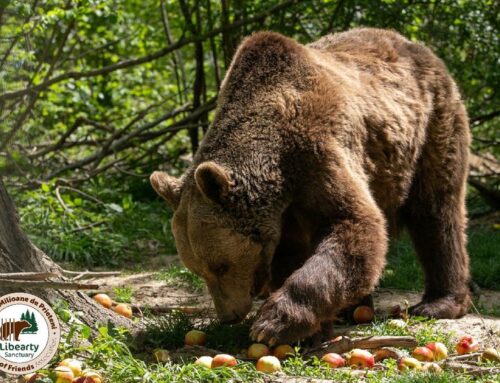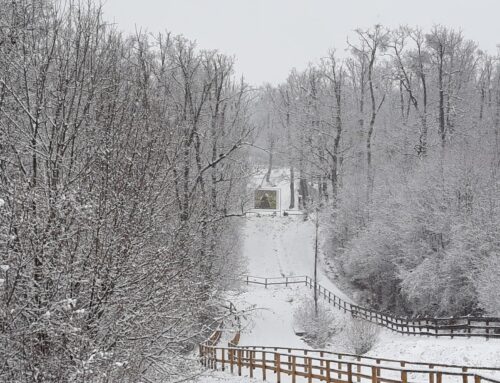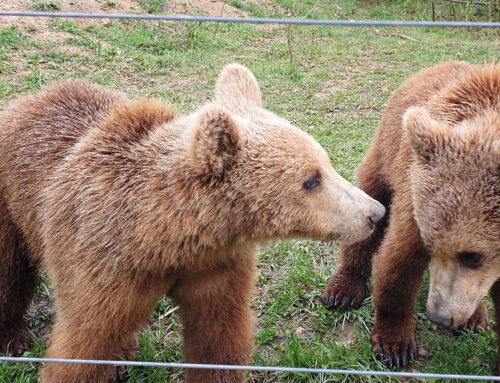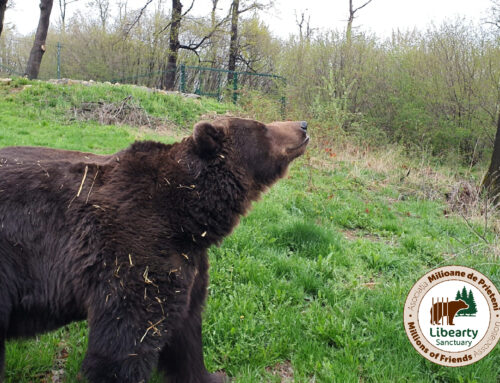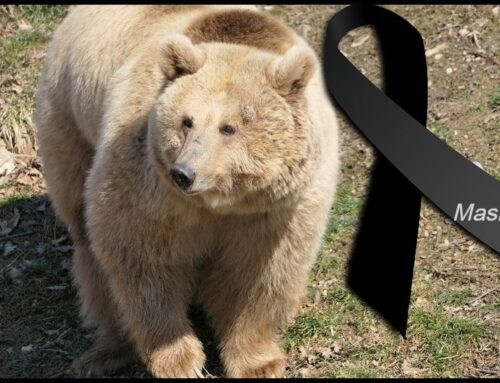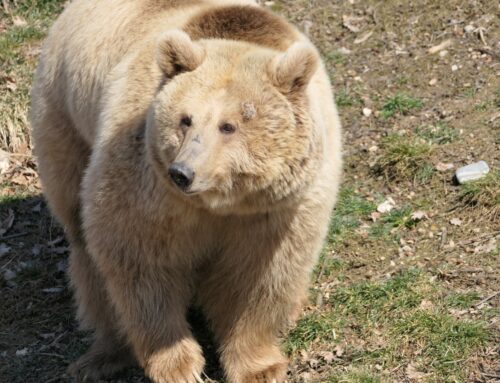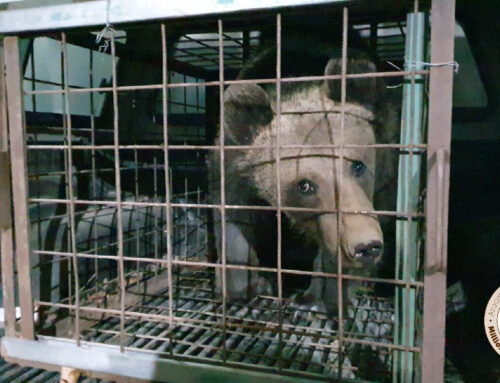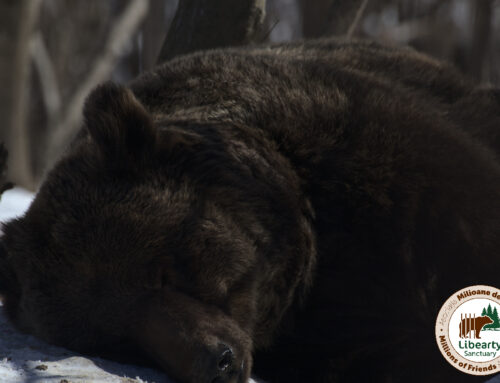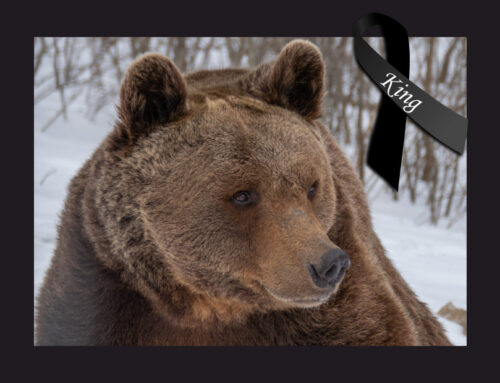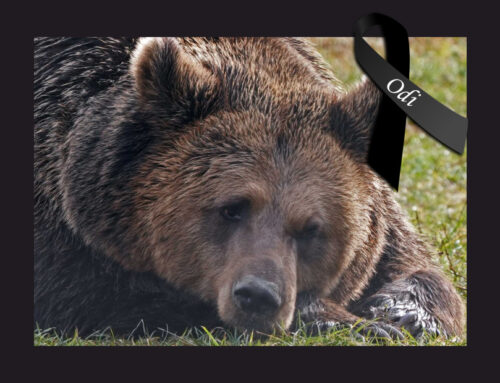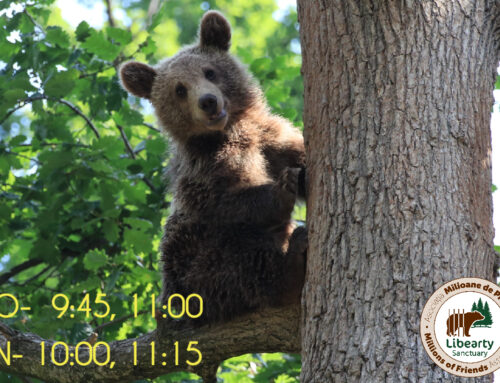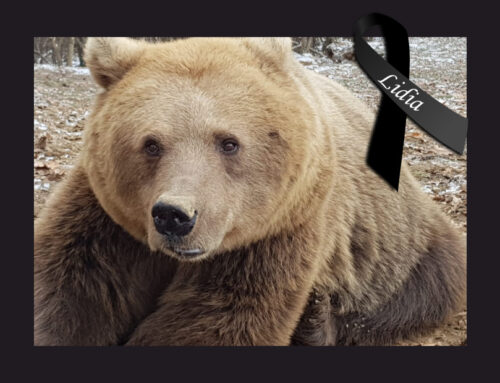
Try to look at your home or campsite from a bear’s perspective. Use the guidelines below to help make life safer for bears and people. Don’t let your carelessness cause the unnecessary death of a bear
AT YOUR HOME
Garbage disposal/storage
-Don’t leave food, scraps, garbage or pet food out for bears.
-Store garbage indoors or in bear-resistant garbage cans.
-Haul garbage to dump site at least twice a week to avoid odors.
-If you have a pickup service, put garbage out an hour or two before the truck arrives — not the night before.
-If you’re leaving several days before pickup, haul your garbage to a dump.
-Be particularly aware of very odorous food scraps such as fish and meat bones – store them in the freezer until garbage day.
Barbecuing
-Be alert when barbecuing. If bears are nearby, they maybe attracted by the smell.
-Keep barbecue grills clean and free from grease. Store inside if possible.
Pets
-It is better to keep pets inside at night if possible
-Do not leave pet food outside.
More helpful tips
-Composts, fruit trees and beehives are powerful bear attractants – enclose then with chain link or electric fencing.
-Don’t put fish, meat or fruit into your compost. Use lime to reduce odors.
-Make sure that bird feeders, bird seed, suet and hummingbird mixes are not accessible to an inquisitive bear.
-Try to pick fruit from trees on your property regularly. Rotting fruit left on the ground is a powerful bear attractant.
-Avoid the use of outdoor refrigerators – they will attract bears.
AT YOUR CAMPSIDE
Camp setup
-First: be aware of your surroundings – look at them from a bear’s perspective. Investigate your site before setting up camp and then establish a clean camp that is free from odors.
-Avoid camping next to trails or streams as bears and other wildlife use these as travel routes.
-Avoid camping near bear food sources such as berries. Never camp near an animal carcass, garbage or bear sings such as tracks, scat or tree scratching.
-Remember the 100 yard rule: locate your cook area and food cache at least 100 yards downwind from your tent.
-Pitch tents in a lime or a semicircle facing your cooking areas. You will be more likely to spot a bear that wanders into your camp and it will have a clear escape route.
Food storage
-Don’t forget! When caching your food and garbage you’ll need: 100 feet of strong nylon accessory cord (1/8 inch minimum) and a carabiner (to attach bags to cord).
-Never leave food unattended, unless it is properly stored.
-DO NOT bring food or odorous non-food items into your tent. This includes toothpaste, perfume, deodorant, chocolate, candy and wrappers.
-Avoid canned foods with strong odors such tuna. Wash cans after eating.
-Food should be placed in bear resistant food storage containers (where available), or stored in your vehicle.
-Where this is not possible, cache your food: place food inside several layers of sealed plastic bags (to reduce odor) and a stuff-sac (‘bear bags’ or water proof ‘dry-bags’ can be purchased for this use), find two trees that are 20 feet apart and hang the bags between them at least 15 feet from the ground using nylon cord and a carabiner. Some campgrounds provide communal bear wires for this purpose.
-If two trees are not available, sling your bags at least 15 feet from the ground over the branch of one tree so that they hang at least 5 feet out from the tree trunk.
-Remember to hang pots, utensils, cosmetics, toiletries and and other odorous items with your food and garbage.
Cooking
-NEVER cook or eat in your tent – it will smell of food and may attract bears. Avoid cooking greasy, odorous foods
-Locate your cook area and food cache at least 100 yards downwind from your tent.
-Remove the clothing you wore while cooking before going to sleep. Stores these clothes in your vehicle.
-Wash all dishes immediately after eating. Dump water at least 100 yards from your campsite.
Garbage disposal / storage
-Never leave garbage unattended, unless it is properly stored.
-Do not bury your garbage
-Garbage should be deposited in bear-resistant garbage cans or stored in your vehicle until it can be dumped.
-Where this is not possible, hang garbage in the same way as food.
-Remember:”pack it in, pack it out”. This includes ALL garbage (including biodegradable items such as fruit peel).
1.WHEN HIKING
2.Seeing and avoiding bears.
3.If you spend much time in the rural areas, the chances of seeing a black bear are quite reasonable. Watching bears in their natural environment from a safe, respectable distance can be incredible thrilling. Positive experiences are far more common than negative ones. Although extremely rare, aggressive meetings between people and bears sometimes occur. To avoid them:
-hike in a group and during daylight hours.
-if a bear hears you coming, it will usually avoid you. Bears feel threatened if surprised. Talk and sing songs as you walk – especially in dense brush where visibility is limited, near running water or when the wind is in your face. Your voice will help bears to identify you as human.
-be aware. Learn about and watch for bear sign. Overturned rocks or broken-up, rotten logs can be a sign that a bear has been foraging for grubs or insects. Claw marks on trees, five toed tracks in the dirt or snow, berries on the ground, plant root diggings or fur on the bark of trees are all sings that a bear has just been in the area.
-stay away from the abundant food sources and dead animals – bears may be foraging in the area or protecting a carcass.
-keep dogs on a leash and under control. Dogs may be helpful in detecting bears, butthey may also fight with them or lead them back to you.
4.-avoid wearing scented cosmetics and hair products. Carry bear deterrent peper spray.
Bear encounters
Encounters with aggressive beats are extremely rare. Attacks are even rarer.
The tips in this safety guide will help prevent bear-human conflicts, but it is always good to be prepared for an encounter.
There is no fool-proof way of dealing with a bear encounter (each bear and encounter is different) but the following responses have worked in the past:
if you see a bear in the distance .
– respect the bear’s need for spare-try to make a wide detour or leave the area.
if you suddenly encounter a bear at close range
– STOP. Assess the situation.
– Bears may act definitively if startled, or if protecting cubs or a food cache.
– Remain calm. Do not run. Identify yourself as human by talking in low tones, with
arms outstretched. Move upwind so that the bear can catch your scent. Don’t crowd the bear – leave it a clear escape route and it will probably exit
– The bear may appear aggitated and stressed, ‘popping’ its jaws or swatting the ground while blowing and snorting. Watch the bear but avoid direct eye contact.
– A bear may charge in an attempt to intimidate you, usually stopping well short of contact.
– If a bear actually attacks in a ‘sudden encounter’ situation ( highly unlikely with black bears), you should lie fiat on your stomach with your legs spread slightly apart. Lock your fingers behind your head. This position will protect your face and neck. Remain still. Once the bear senses that you are not longer a threat, it will usually leave the area.
If a bear follows you
– STOP. Assess the situation.
– Bears very rarely exhibit predatory behavior (following you before attacking).
– If a bear follows you, stand your ground. Try to be intimidating – make lots of noise, appear as large as possible throw rocks and sticks. Let the bear know that you will fight back if attacked and that you are not easy prey. Do not run.
– If the bear continues to follow , place your pack or other item down as a distraction.
– During an offensive, predatory attack as this you should fight back.
– Carry bear deterrent pepper spray-it may help in an encounter with a potentially
aggressive bear.
Remember, bears are far more likely to enhance your wilderness experience than spoil it. Knowing how to interpret their behavior and act responsibly is part of the thrill of sharing forests and mountains with these amazing creatures.



